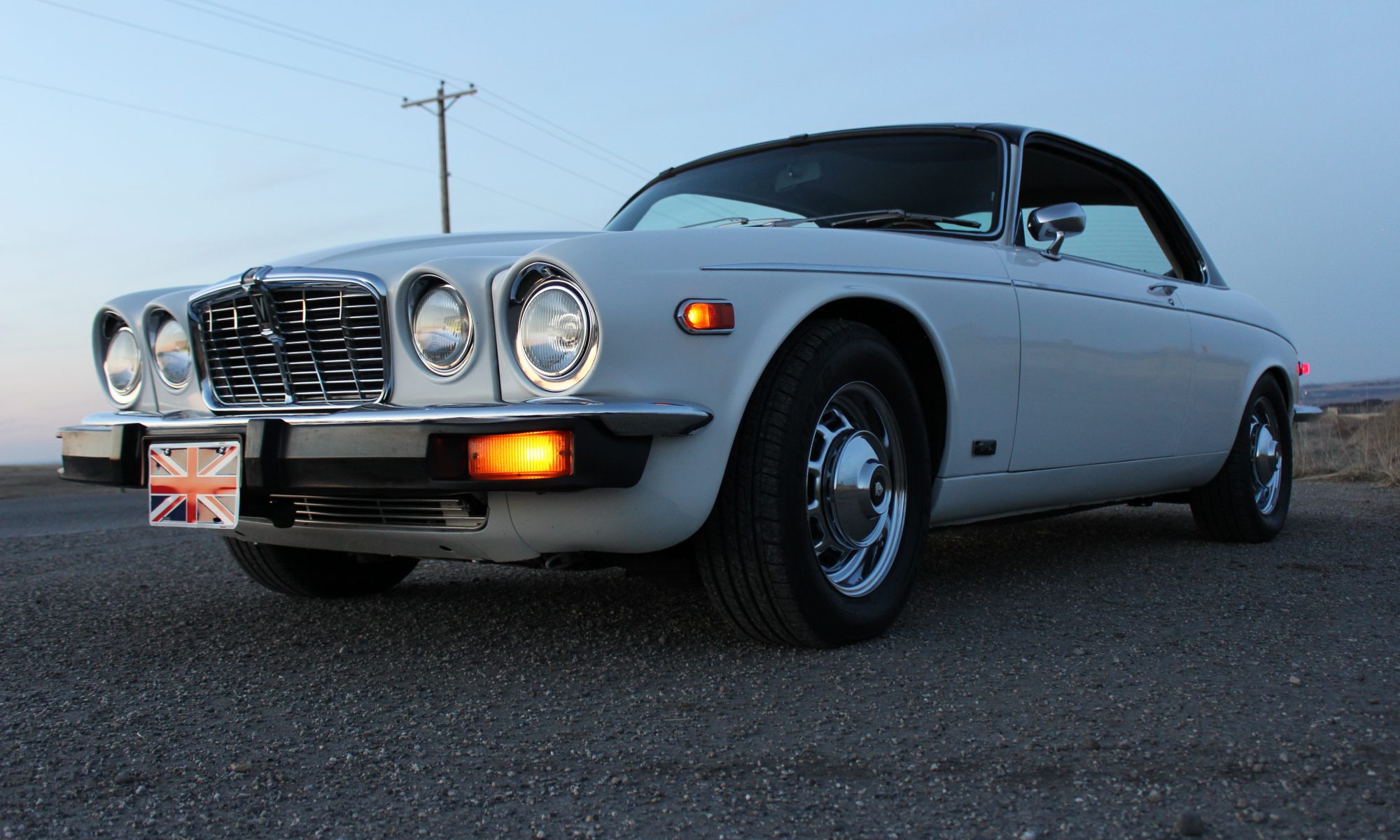I hope you are all staying healthy, and if possible, taking advantage of some self isolation in the garage.
The Jaguar runs excellent again!!!!! Since the move to Denver, the engine has not run right. After trying a number of things and much frustration, replacing the MPS fixed the problem……here is the whole story.
As I previously posted, the car was really lazy at low throttle, with some backfiring when accelerating.

My thoughts around how to address this were:
- Check manifold pressure sensor
- Verify fuel pressure
- Spark plugs correct?
- Are the air filters plugged?
- Check for vacuum leaks
- Are the coolant and air intake sensors working?
Manifold Pressure Sensor
One of the biggest inputs to the D-Jetronic fuel injection is the MPS that measures the difference in pressure between the manifold and atmosphere.



There are only a few checks you can make on these sensors.
Does it hold vacuum? Using my handy Mityvac I confirmed there was no leaking of the diaphragm.
Does it check out electrically? It fell within the resistance values from the workshop manual
Does it actually adjust how the car runs? I attached the sensor port to the vacuum pump while idling and made some small changes to vacuum and there was a definite change in how the engine idled.
Check…..MPS good.
Fuel Pressure
As I have written about previously, I have a reliable fuel pressure regulator and am able to monitor fuel rail pressure with a gauge in the dash. Since the engine was running too rich, I decided to re-adjust the fuel pressure down to 28.5 psi which is the lowest end of the recommended range.
This did not change how the car ran.
Spark Plugs
At this point I was wondering if the plugs were not a symptom of the problem, but the problem itself. Maybe hotter plugs were the answer. I was a little nervous about messing around with different spark plugs, so it was time to get some advice.
First I made a post on Jaguar Forums titled “What spark plugs are you using on a pre HE”. I have always used the NGK BPR6ES, but a well respected voice on the forums, Grant Francis, indicated that he had always run the hotter NGK 5 rated plugs. So I tried those.

Decided to go the the person who seems to be the most knowledgeable on D-Jetronic fuel injection systems, Dr-DJet Volker. I signed up for his forum and posted about my situation there. His recommendation was to try non-resistor spark plugs, as he has much better luck with these in his Mercedes’ and they should have a stronger spark.
Replaced with BP6ES plugs….but no change in how the car ran. Unless I see some electrical gremlins pop up, I think I will stay with these plugs.
UPDATE: Using non-resistor plugs did cause some rough running so they must interfere with the electronics. I changed back to BPR6ES and everything is good again.
Air Filters

Vacuum leaks
I am never truly convinced there are no vacuum leaks on this engine, but my early pre-HE V12 has very little emissions related vacuum piping, so there is a better chance of finding leaks compared with the later engines.
I sprayed carb cleaner all around the intake manifolds with no change in idle. Also clamped off auxiliary vacuum lines coming off the intakes and blocked off the overrun valves with no idle change.
One thing that surprised me when I was checking for leaks….when I blocked off the PCV valve, the idle dropped by 300 RPM. That seems like a lot of flow through the valve.


If any of you have a pre-HE, I would be really curious if you clamped off the hose coming from the auxiliary air valve to the PCV somewhere and could let me know how much your idle drops off. Its probably fine, but its bugging me…….
Temperature Sensors
Another pretty large trim to fueling is the coolant temp sensor. Put the coolant sensor in some boiling water with a thermometer while checking resistance. Added cold water and watched the resistance change matching up to the spec. Used a hair dryer on the air temp sensor with an IR thermometer and that one was within spec as well.
I’m sure this is how a lot of V12’s get replaced with American lumps. I sure was dreaming about this…….
During this entire sordid experience I really need to thank fellow coupe owner Ed for his ideas and moral support. He kept pushing me on the MPS and I was pretty adamant that it had checked out and could not be a problem. My ideas kept getting more exotic….and dumber.
Ed found another MPS and sent it to me to try and to my amazement……the car ran great. I can’t thank Ed enough, I would be still going down some rabbit hole with no end in sight without his help……
Of course, nothing is simple. During my multiple swaps back and forth of the two sensors, one of the wires broke off the connector. In case someone else has this problem, I tried different things and found this one to fix the connector.

Notice how it has two right angle and two slanted corners. It would make you think there is only one way to slide this in to the sensor. Well, be careful here………..








Had the car out yesterday for a drive and it feels like it did two summers ago. It sounds great, and feels strong.
Now I just need it to stop snowing so we can get the coupe out for a proper drive….


You must be logged in to post a comment.